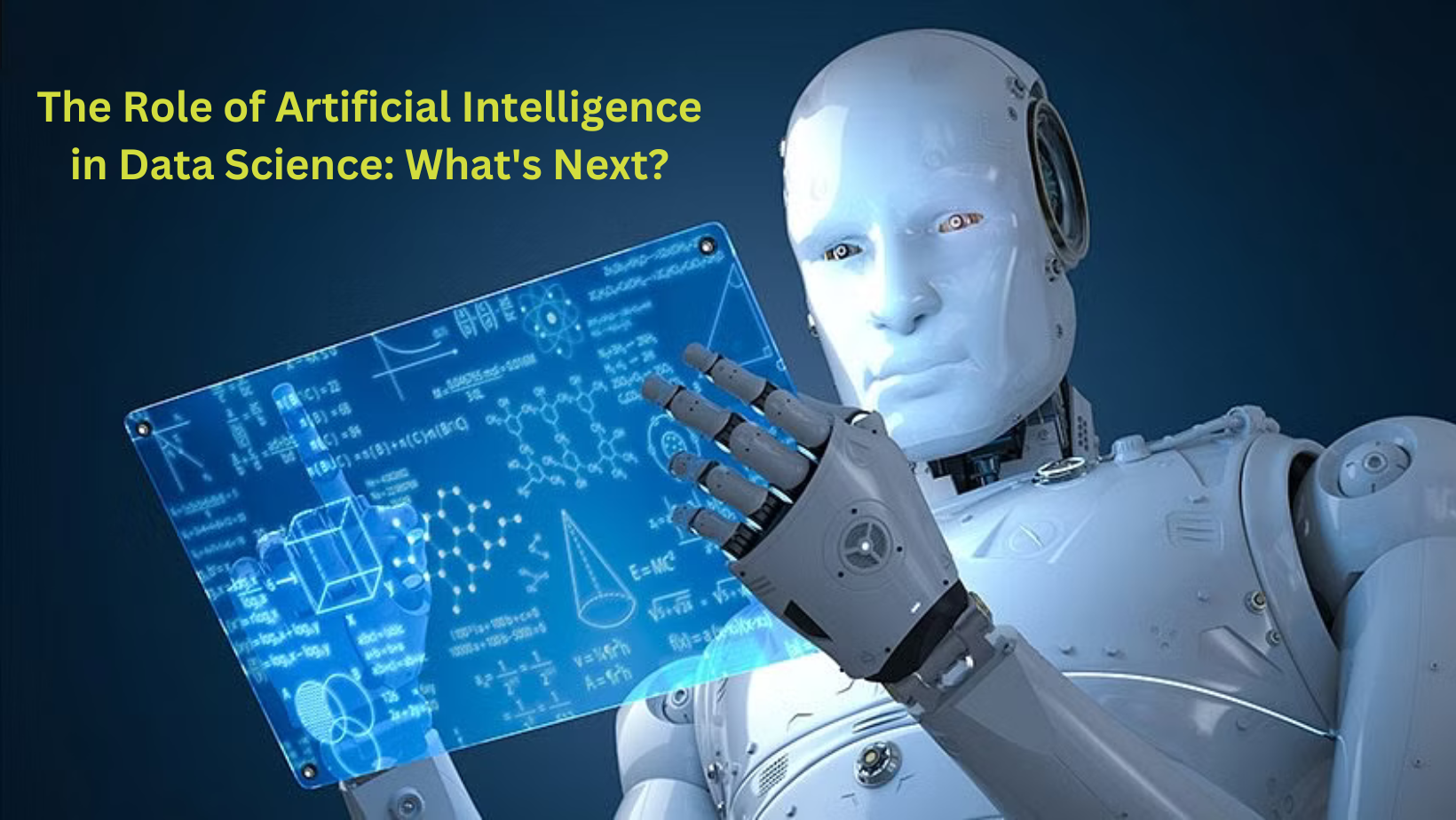The Role of Artificial Intelligence in Data Science: What's Next?
khushnuma . Follow
2 months ago

The dance between data and decision-making has grown more intricate in the modern age, largely due to the expanding role of Artificial Intelligence (AI) in data science. With each passing year, AI embeds itself deeper into the fabric of our technological landscape, not just revolutionizing data science but redefining it. As we stand on the brink of this new era, it’s crucial to understand the current state of AI in data science, its future trajectory, and what this means for industries and individuals alike.
The Evolution of AI in Data Science
AI and data science have long been intertwined. In the past, data science heavily relied on statistical models and human-driven analyses to interpret complex datasets. While these traditional methods remain in use, AI has brought about a paradigm shift, pushing the boundaries of what is possible. Through machine learning, deep learning, and other AI techniques, data scientists now process vast amounts of data with unprecedented speed and accuracy.
Initially, AI in data science focused on automating repetitive tasks. Simple algorithms helped cleanse data, perform initial analyses, and identify basic patterns. As AI technologies matured, they became more sophisticated, shifting from mere automation to playing a central role in predictive analytics, data-driven decision-making, and prescriptive analytics, where AI not only predicts outcomes but also suggests actions.
The Current Landscape
Today, AI is deeply integrated into data science workflows, enabling data scientists to tackle complex problems more efficiently. One of the most significant advancements is in predictive analytics. AI models, especially those based on deep learning, can analyze historical data to forecast future trends with remarkable precision. These predictions are invaluable for businesses across various industries, from finance and healthcare to retail and manufacturing.
Moreover, AI has democratized data science. With the rise of user-friendly AI tools and platforms, even those with limited technical expertise can harness the power of data. Automated machine learning (AutoML) platforms, for example, allow users to build and deploy AI models with minimal coding. This accessibility has expanded the reach of data science, enabling more organizations to leverage their data for strategic advantage.
Another critical area where AI has made significant strides is natural language processing (NLP). NLP algorithms have dramatically improved, allowing machines to understand and generate human language with increasing accuracy. This advancement has opened new possibilities for analyzing unstructured data, such as social media posts, customer reviews, and other text-heavy datasets. With NLP, companies gain deeper insights into consumer sentiment, brand perception, and emerging trends, leading to more informed decision-making.
Challenges and Ethical Considerations
Despite its many benefits, the integration of AI in data science is not without challenges. One primary concern is the issue of bias in AI models. Since AI algorithms learn from historical data, they can inadvertently perpetuate existing biases, leading to skewed results. For example, if a hiring algorithm is trained on data from a company that has historically favored male candidates, it may continue to favor male candidates, perpetuating gender inequality.
To mitigate these risks, it’s crucial to ensure AI models are trained on diverse and representative datasets. Additionally, there is a growing emphasis on explainable AI, which seeks to make AI decision-making processes more transparent. By understanding how an AI model arrives at a particular decision, data scientists can identify potential biases and take corrective action.
Another significant challenge is data privacy. As AI systems become more pervasive, they often require access to large amounts of personal data. Regulations like the General Data Protection Regulation (GDPR) in Europe and similar laws around the world place strict limits on data usage, emphasizing the need for AI systems to be designed with privacy in mind.
Furthermore, the rapid pace of AI development has led to concerns about job displacement. As AI systems become more capable of performing tasks traditionally done by humans, there is a fear that many jobs, particularly those in data processing and analysis, could be at risk. However, it's important to recognize that while AI will inevitably change the nature of work, it also has the potential to create new opportunities. By automating routine tasks, AI can free up human workers to focus on more strategic and creative activities, leading to a more dynamic and innovative workforce.
The Future of AI in Data Science
Looking ahead, the role of AI in data science is poised to grow even more significant. One of the most exciting areas of development is artificial general intelligence (AGI). Unlike narrow AI, designed for specific tasks, AGI aims to emulate human-like intelligence, enabling it to understand, learn, and apply knowledge across various fields. While AGI is still in the early stages of research, its eventual development could revolutionize data science, enabling machines to perform complex analyses currently beyond our reach.
Another exciting development is the integration of AI with emerging technologies, such as the Internet of Things (IoT) and blockchain. The IoT generates massive amounts of data from connected devices, and AI will be instrumental in analyzing this data to uncover new insights and drive decision-making. Meanwhile, blockchain technology, with its focus on transparency and security, could help address some of the ethical and privacy concerns associated with AI in data science.
As AI continues to evolve, we can expect to see more sophisticated forms of human-AI collaboration. Rather than replacing human workers, AI is likely to augment human capabilities, allowing data scientists to tackle previously unsolvable problems. For example, AI can assist in hypothesis generation, data exploration, and even in the design of experiments, providing data scientists with powerful new tools to push the boundaries of their work.
Finally, the future of AI in data science will likely involve a greater focus on sustainability and social impact. As the world faces increasingly complex challenges, from climate change to public health crises, AI-driven data science will play a crucial role in finding solutions. By analyzing vast amounts of data, AI can help identify patterns and trends that can inform policy decisions, optimize resource allocation, and drive innovation in areas such as renewable energy, healthcare, and education.
Conclusion
The marriage of AI and data science is more than just a technological evolution; it’s a fundamental shift in how we understand and interact with the world. As AI continues to advance, its role in data science will only deepen, offering new possibilities for innovation, efficiency, and understanding. However, this progress must be tempered with careful consideration of the ethical and social implications. By fostering a balanced approach, we can harness the power of AI in data science to create a future that is not only more intelligent but also more just and equitable.
As we stand on the cusp of this new era, the possibilities are as boundless as they are exciting. With AI as our guide, the future of data science is not just about what we can achieve, but how we can do so responsibly, ensuring that technology serves humanity rather than the other way around. For those seeking to be at the forefront of this transformation, Data Science Training Institutes in Nagpur, Lucknow, Delhi, Noida, and across India are rapidly adapting to equip professionals with the skills needed to thrive in this evolving landscape. The next chapter in this story is ours to write, and it promises to be one of the most compelling yet.
Recommended topics
Recommended from Guest Post
Gavin Flannery


